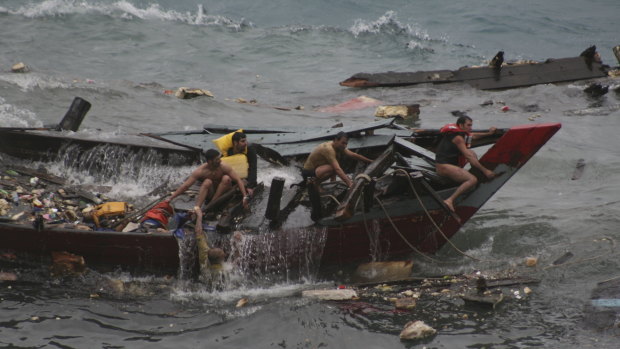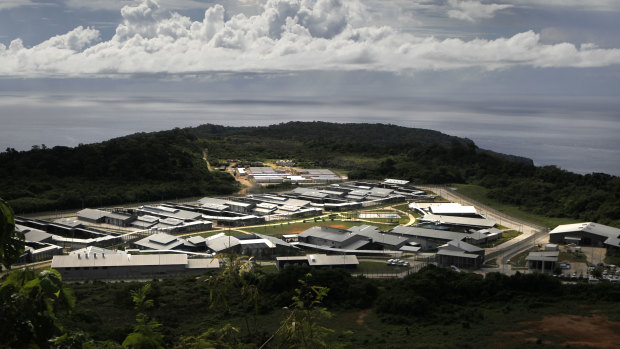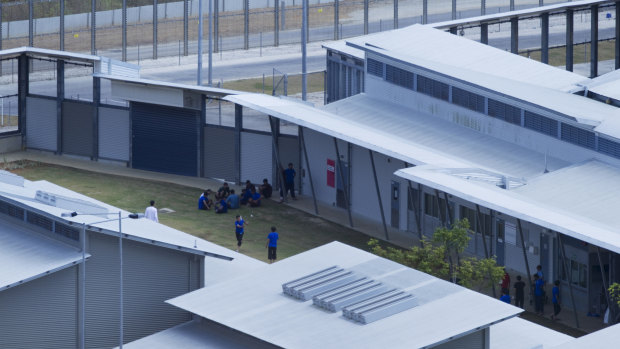- Exclusive
- Politics
- Federal
- Immigration
This was published 5 years ago
After 10 years, the notorious Christmas Island detention centre has quietly closed
Far closer to the Indonesian island of Java than Perth, Broome or indeed anywhere on the mainland, Christmas Island is out of sight and out of mind for most Australians. Stunning geography aside, the island is best known as the home of a large, unforgiving immigration detention centre, ground zero for thousands of asylum seekers since the facility opened in 2008.
Until now. The Morrison government quietly closed the detention centre at the weekend, two years after the plan was mooted. For the first time in a decade, no asylum seeker or immigration detainee is imprisoned on Christmas Island.
"This is another example of the Coalition government cleaning up Labor’s mess," Immigration Minister David Coleman told Fairfax Media.

A boat carrying asylum seekers sinks off the coast of Christmas Island in 2010. Credit: Nine News
The final planeload of 30 detainees left the island on Sunday. The government would not confirm their destinations, other than to say they had been taken to "mainland facilities". But long-time refugee advocate Pamela Curr said the detainees had been relocated to Villawood Detention Centre in Sydney, Yongah Hill east of Perth and the Melbourne Immigration Transit Accommodation.
The government has not updated its immigration detention statistics since June 30. On that date, there were 239 men at the Christmas Island facility – far fewer than its peak of around 2400 people in 2010, when the then Labor government was inundated with boat arrivals.
In December that year, the island witnessed mass tragedy when an asylum seeker boat crashed into rocks north of Flying Fish Cove, the main settlement. Fifty people died, including 15 children. In bad weather, residents had raised the alarm about the wooden boat, but it was not intercepted in time. In a class action concluded only last year, the NSW Supreme Court ruled against the victims' families, finding the Commonwealth had no control over the events.
Commissioned by John Howard but first used by Kevin Rudd, the Christmas Island detention centre has long been an emblem of Australia's controversial handling of asylum seekers who come by boat.
Ms Curr, who visited the facility twice, remembered it as a brutal prison.
"There's no softness, there’s no carpets, there’s no curtains," she said. "Everything is barred. The rooms are just hard cold metal."
Though the rooms are now empty, they could whir back into action if another asylum seeker boat makes it into Australian waters. For example, the 17 Vietnamese people aboard the boat that ran aground near the Daintree rainforest in August were taken to Christmas Island at the time.
Mr Coleman said the facility will be "kept in a state of operational readiness so it can be reopened at short notice if needed". But the government is intent on keeping the promise made by Home Affairs Minister Peter Dutton before the last election to close 17 detention centres, including Christmas Island. Mr Coleman said the closures have saved more than $500 million.

The Christmas Island detention centre had more than 2000 occupants at the peak of the asylum seeker crisis in 2010. Credit: Glen McCurtayne
But the end of one problem spells another. The detention centre and its contracted administrator, Serco, employed about 70 local workers on the island. A dozen have already lost their jobs, with more to come, according to shire president and union leader Gordon Thompson.
"The consequences for the island's economy are dire," he says.
Mr Thompson opposed the construction of the centre and describes the detention of asylum seekers as "appalling". But on an island with 1500 or fewer permanent residents, the facility was significant as it was controversial. The closure comes at an especially difficult time - the federal government rejected a bid to expand the local phosphate mine on environmental grounds, plunging the entire operation into doubt.
"The uncertainty is gnawing away at me," Mr Thompson says. "We're quite depressed about where we're at."

Asylum seekers at the sprawling but now mothballed detention centre in 2011. Credit: James Brickwood